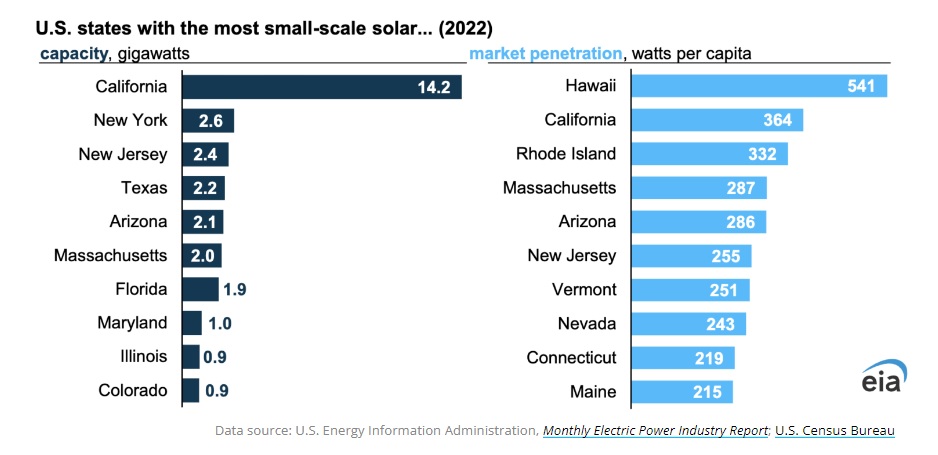If you measure installed “small-scale solar” per capita, says the federal Energy Information Agency, you’ll find five of the six New England states in the top 10.
No prizes for guessing who is left out. CleanTechnica article is here.
EIA says national capacity of small-scale solar (installations of less than 1 megawatt) grew by 6,400 megawatts (6.4 gigawatts) in 2022, the most ever, to a total of 39.5 gigawatts. It estimates that this makes up a third of the country’s total photovoltaic installation.
How much is that? Let’s check our handy-dandy Seabrook metric.
A megawatt of solar produces roughly 1,450 megawatt-hours of electricity a year (that number varies a lot, of course). So 39.5 gigawatts or 39,500 megawatts of rooftop solar will produce 57.7 million megawatt-hours of electricity annually.
Seabrook Station nuke plant generates about 10 million megawatt-hours a year.
So over the course of the year, the nation’s rooftop solar produces as much electricity as 5 1/2 Seabrook Station-sized nuclear power plants. That’s a lot but it’s also not much, depending on your point of view.


 Return to the Concord Monitor
Return to the Concord Monitor
Hello David,
I have been wondering: could it be true that New Hampshire is the only state in the country whose capital city has not one single public EV charging spot?
I can’t think of another state that could share the honors.
Paul: there has been a public 2-connection Chargepoint station off Green St since 2021 and a public 12-connection Tesla Supercharger station off Exit 17 since 2022. If we were the last capital city to get public chargers, it’s old news now. Note to others: there are many more semi-public EV chargers available to hotel guests, auto dealer customers, and business employees throughout the city; with many more being built.
Thank you James, I did not know about the Chargepoints near Green St.
I don’t count the Tesla chargers as ‘public.’ They are installed by Tesla for Tesla owners. Kudos to them for doing it (no other car company has), but they are not yet available to the rest of us.